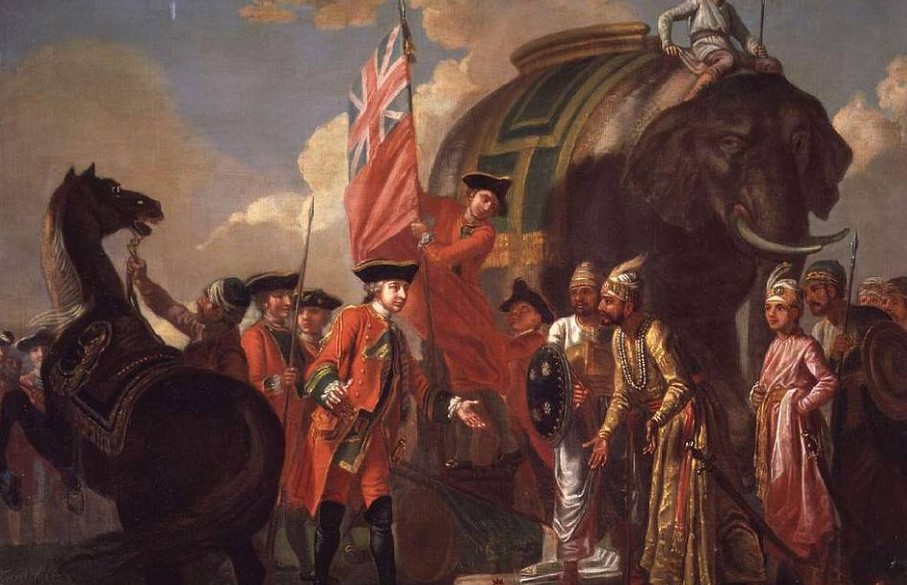
Modern History MCQs – 1 (Arrival of Europeans in India)
Most important multiple choice questions from the chapter – Arrival of Europeans in India MCQs.
Home » UPSC Study Materials » Prelims Express » Chapterwise MCQs » Modern History MCQs » Modern History MCQs – 11 (Arrival of Gandhi and Jallianwala Bagh Massacre)
Arrival of Gandhi and Jallianwala Bagh Massacre MCQs with answers and explanations for UPSC and Other examinations.
1. Which of the following magazines was published by Mahatma Gandhi during his stay in South Africa ?
(a) Bengal Gazette
(b) India Gazette
(c) Africaner
(d) Indian opinion
Correct Answer – (d) Indian opinion
2. In which year Gandhi returned from South Africa ?
(a) 1915
(b) 1917
(c) 1916
(d) 1918
Correct Answer – (a) 1915
3. Mahatma Gandhi regarded who among the following as his Political Guru ?
(a) Lala Lajpat Rai
(b) Gopal Krishna Gokhale
(c) Dadabhai Naoroji
(d) Bal Gangadhar Tilak
Correct Answer – (b) Gopal Krishna Gokhale
4. Which among the following was the first Satyagraha movement led by Mahatma Gandhi in India ?
(a) Champaran Satyagraha
(b) Kheda Satyagraha
(c) Non-Cooperation Movement
(d) Quit India Movement
Correct Answer – (a) Champaran Satyagraha
5. Who among the following leaders joined Gandhiji in the Champaran Satyagraha ?
(a) Bal Gangadhar Tilak
(b) Subhash Chandra Bose
(c) Rajendra Prasad
(d) None of these
Correct Answer – (c) Rajendra Prasad
6. During the Jallianwala Bagh incident, people were peacefully protesting against ?
(a) Ilbert Bill
(b) Rowlatt Act
(c) Partition of Bengal
(d) None of the above
Correct Answer – (b) Rowlatt Act
7. After which among the following incidents, Rabindranath Tagore renounced his knighthood ?
(a) Death of Bhagat Singh
(b) Death of Lala Lajpat Rai
(c) Jallianwala Bagh incident
(d) None of the above
Correct Answer – (c) Jallianwala Bagh incident
8. Who among the following was the Viceroy of India at the time of Jallianwala Bagh Massacre ?
(a) Lord Chelmsford
(c) Lord Dalhousie
(b) Lord Minto
(d) Lord Canning
Correct Answer – (a) Lord Chelmsford
9. What is the correct chronological sequence of the following events ?
1. Champaran Satyagrah
2. Ahmedabad Mill strike
3. Kheda Satyagraha
Select your answer using the codes below :
(a) 2, 3, 1
(b) 3, 2, 1
(c) 1, 2, 3
(d) None of the Above
Correct Answer – (c) 1, 2, 3
10. Gandhiji was not involved in which among the following Movements ?
(a) Swadeshi Movement
(b) Khilafat Movement
(c) Individual Satyagraha
(d) Quit India Movement
Correct Answer – (a) Swadeshi Movement
11. The instrument of ‘Fast unto death’ was used by Mahatma Gandhi for the first time in India in which among the following events ?
(a) Champaran Satyagrah
(b) Ahmedabad Mill strike
(c) Kheda Satyagraha
(d) None of the Above
Correct Answer – (b) Ahmedabad Mill strike
12. First all India movement launched by Gandhi was which among the following ?
(a) Non-Cooperation Movement
(b) Rowlatt Satyagraha
(c) Champaran Movement
(d) Dandi March
Correct Answer – (b) Rowlatt Satyagraha
13. Consider the following statements about The Hunter Committee :
1. It was set up to investigate the Jallianwala Bagh Tragedy
2. No Indian was a member of this Committee.
Which of the above statements is/are correct ?
(a) 1 only
(b) 2 only
(c) Both 1 & 2
(d) None of the above
Correct Answer – (a) 1 only
More questions are coming soon. Join us on Whatsapp for latest updates: Join CivilsCracker on Whatsapp

Most important multiple choice questions from the chapter – Arrival of Europeans in India MCQs.

Most important multiple choice questions from the chapter – Battle of Plassey and Battle of Buxar MCQs.

Most important multiple choice questions from the chapter – Social and Religious Reform Movements MCQs.

Most important multiple choice questions from the chapter – Anglo Mysore Wars and Anglo Maratha Wars MCQs.

Most important multiple choice questions from the chapter – Governor Generals of India MCQs.

Most important multiple choice questions from the chapter – Revolt of 1857 MCQs.

Most important multiple choice questions from the chapter – Organizations before Indian National Congress MCQs.

Most important multiple choice questions from the chapter – Important Sessions of Indian National Congress MCQs.

Most important multiple choice questions from the chapter – Partition of Bengal and Swadeshi Movement MCQs.

Most important multiple choice questions from the chapter – Surat Split and Lucknow Pact MCQs.
We are adding new Notes, Chapterwise MCQs, Quizzes, Previous Years Questions everyday
We are adding new Notes, Chapterwise MCQs, Quizzes, Previous Years Questions everyday